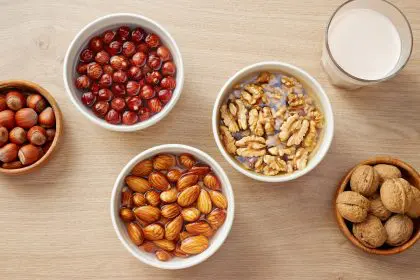In a market flooded with countless bread options, making a healthy choice can feel overwhelming. After rigorous testing of over 150 breads, nutrition experts have identified the top contenders that deliver both health benefits and satisfying taste, helping consumers make informed decisions for their dietary needs.
Understanding bread labels
Before diving into specific recommendations, it’s crucial to understand how to read bread labels effectively. The ingredients list should start with whole grains, and terms like “enriched” or “refined” often indicate less nutritious options. Watch out for hidden sugars under names like corn syrup, honey, or molasses.
The science behind healthy bread
When evaluating bread options, experts focus on key nutritional factors including whole grain content, fiber levels, protein amounts, and added sugar limitations. The best choices offer a balanced nutritional profile while maintaining the satisfying taste and texture that bread lovers crave.
Top recommendations and their benefits
Dave’s Killer Bread 100% Whole Wheat stands out as a superior choice in the whole wheat category. Each slice delivers impressive nutrition, including essential omega-3 fatty acids that support overall health. The subtle sweetness and hearty texture make it a versatile option for everything from sandwiches to toast.
Little Northern Bakehouse’s Seeds and Grains Bread revolutionizes gluten-free eating with its innovative blend of alternative flours and nutrient-rich seeds. This option proves that gluten-free consumers don’t have to sacrifice taste or texture for their dietary needs.
Royo Bread Co’s Low Carb Artisan Bread addresses the growing demand for reduced-carbohydrate options. Its impressive 11 grams of fiber per slice helps maintain steady blood sugar levels while providing sustained energy throughout the day.
The role of processing methods
The way bread is processed significantly impacts its nutritional value. Sprouted grains, used in options like Angelic Bakehouse bread, undergo a natural process that increases nutrient availability and can make the bread easier to digest. This process also enhances the bread’s protein content and reduces antinutrients that can interfere with mineral absorption.
Storage solutions for maximum freshness
Different types of bread require specific storage methods to maintain their quality. Whole grain breads generally last longer at room temperature than refined varieties. Keep artisanal breads in paper bags at room temperature, and store sliced bread in the freezer for up to three months. Avoid refrigeration, which can actually accelerate staleness.
Common misconceptions debunked
Many consumers believe all bread is unhealthy or that gluten-free automatically means healthier. However, whole grain breads provide essential nutrients, including B vitamins, fiber, and minerals. The key is choosing options with minimal processing and added ingredients.
Seasonal considerations and availability
While bread is available year-round, prices and availability can fluctuate. Many healthier options are now becoming more widely available in mainstream grocery stores, though some specialty breads may require shopping at health food stores or online retailers.
Budget-friendly strategies
While some recommended breads carry premium price tags, their nutritional benefits often justify the cost. Buying in bulk when items are on sale and freezing them for later use can help manage costs. Consider the bread’s satiety factor and nutritional density when evaluating its value in your overall meal planning.
Incorporating healthy bread into different diets
These nutritionist-recommended breads can complement various dietary patterns. Mediterranean diet followers often focus on whole grain options, while those following low-carb diets benefit from high-fiber varieties. Plant-based eaters should look for breads fortified with essential nutrients like B12 and iron.
Alternative uses and serving suggestions
Beyond standard sandwiches and toast, healthy breads can be transformed into homemade croutons, breakfast casseroles, or nutritious breadcrumbs. Their dense, nutrient-rich composition often makes them more versatile than conventional breads.
The impact of grains on nutrition
Different grains provide varying nutritional benefits. Ancient grains like quinoa, amaranth, and spelt, found in some recommended breads, offer unique nutrient profiles and can benefit overall health. These grains often provide higher levels of protein and micronutrients compared to conventional wheat.
Future trends in healthy bread
The bread industry continues to innovate with functional ingredients like probiotics and adaptogens. Sustainable packaging solutions and reduced environmental impact production methods are becoming increasingly important. Enhanced protein content from plant-based sources represents another growing trend in healthy bread development.
Making the switch to healthier bread
Transitioning to healthier bread options may require some adjustment. Begin by gradually introducing whole grain breads and experimenting with different brands and varieties. Pay attention to how different breads affect your energy levels and satiety throughout the day.
Expert tips for selection and use
Nutritionists recommend choosing breads with at least 3 grams of fiber per slice and whole grains as the first ingredient. Look for options with less than 150mg of sodium per slice and minimal added sugars. These guidelines ensure your bread choice supports your overall health goals while providing maximum nutritional benefit.
This comprehensive guide to healthy bread options empowers consumers to make informed choices that align with their nutritional goals while enjoying this dietary staple. Remember that the best bread choice is one that fits your specific dietary needs, budget, and taste preferences while providing optimal nutrition.












